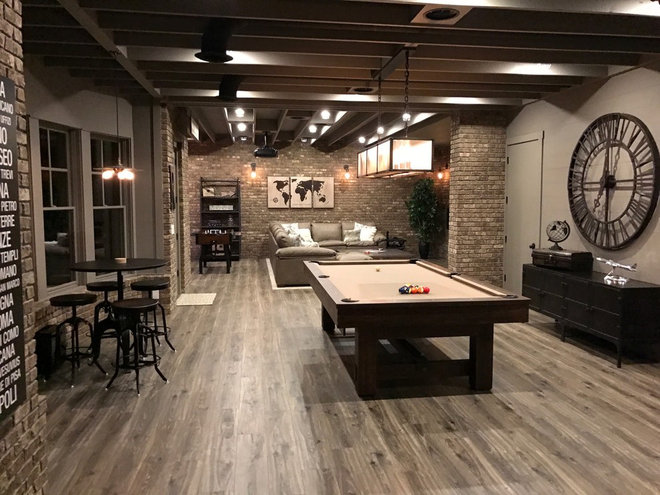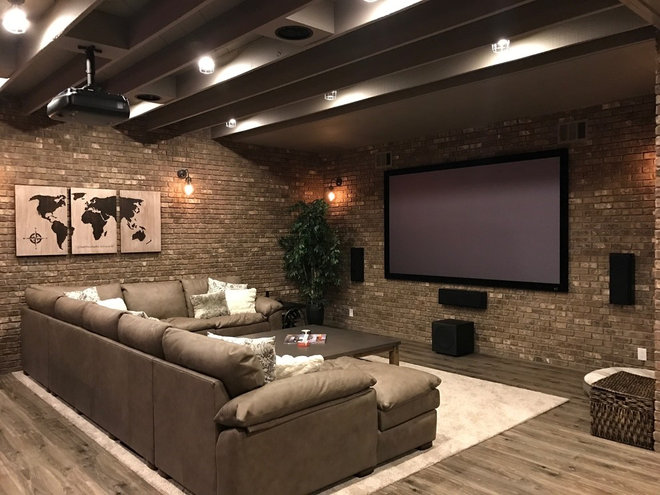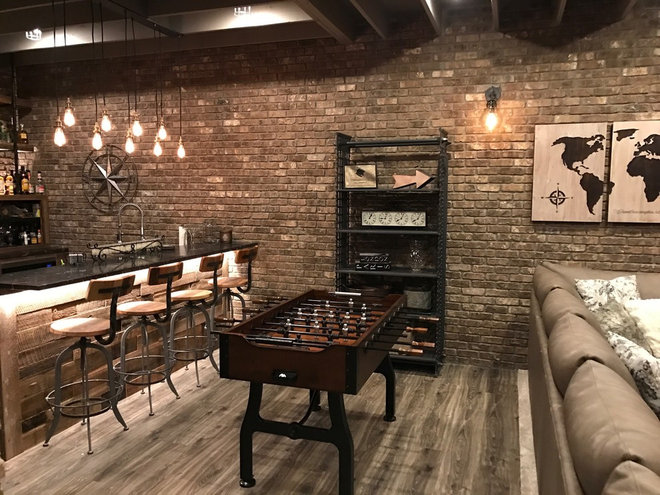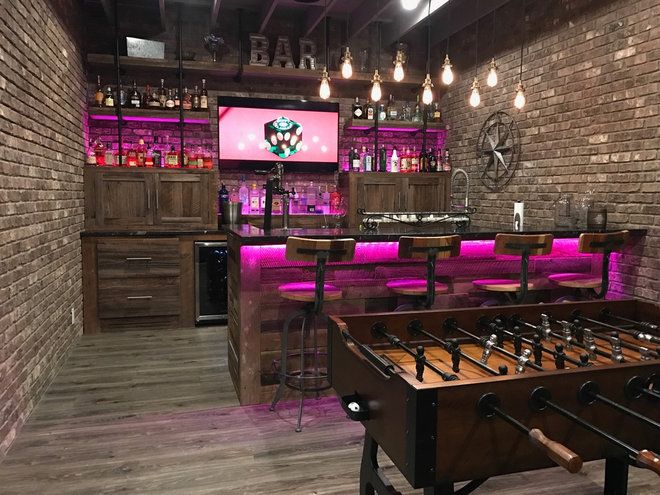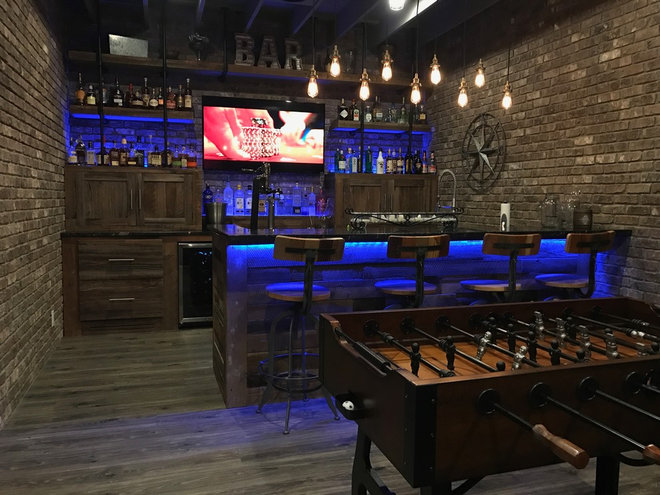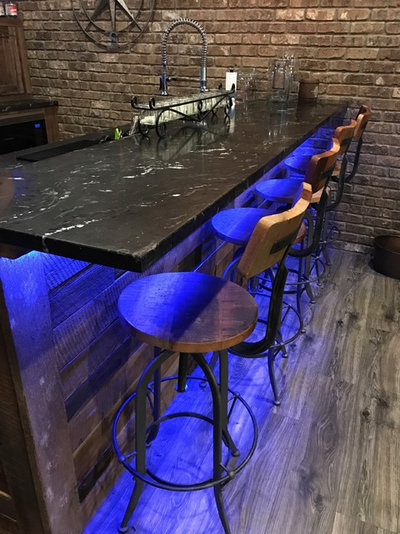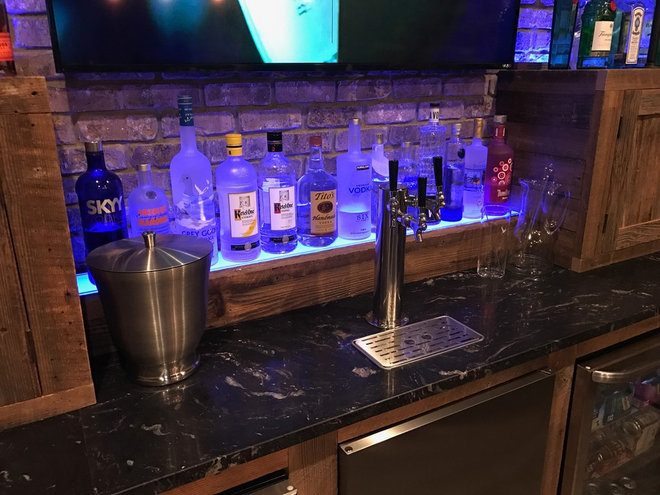RISK MAKES A COMEBACK
Are builders, developers, investors, lenders, and home buyers ready to take it on?
A widely held view among developers, builders, lenders, investors, etc., is that government risk aversion went way overboard coming out of the Great Recession, and that’s been holding back housing and the economy.
There’s data loaded for bear as evidence. A National Association of Realtors study on worrying U.S. homeownership trends estimates that if housing bounced back as it should have–i.e. without crushing overreach from regulators holding it back–the sector would have added $300 billion to the U.S. economy in 2016, with a GDP impact of 1.8%.
Moreover, a new NAR study
suggests that if a normal housing rebound had occurred, there’d have been organically-driven starts of an additional 3.7 million homes across the past eight years, more than double what actually happened.

It’s hard not to imagine where we’d be now if all that production and productivity had taken place in typical post-recession fashion.
Instead, housing’s recovery has had to crawl and claw through conditions and circumstances seemingly inimical to its very existence. Unpacking the root causes from the effects, seeing one root cause as separate and distinct from others, and understanding the root cause of the root causes have been problematic.
So, old Uncle Sam–who’s always up in everybody’s business, taxing this and restricting that and requiring this and making a new code to comply with here and banning activity there–gets blamed for being the bad guy behind all of the negatives. He’s the reason the economy’s sluggish. He’s the reason deals don’t get done, money can’t move, businesses’ hands are tied, people can’t start companies or hire workers, or get loans.
Now, the complexion is changing, the barriers–real and imagined–are being lowered, and a new policy era is getting traction, focused at least initially on undoing everything Uncle Sam was preoccupied doing over the last eight plus years.
Fact is, for housing and real estate to work well and normally, they must tolerate certain amounts of risk. The private sector only ever fully engages in business opportunities when competitive edge goes to ones whose risks are both bolder and smarter than others’. Overregulation has held back some fair amount of this investment, reduced the pool of active players, and stunted the overall growth of capital put in place in the sector because competition has been thwarted.
New days, new risk tolerance levels, and new rewards to those who’re successful at managing those risks, are at hand.
We’re starting to see signs everywhere. Here’s two examples (note, both of these articles are behind the WSJ paywall … please email me if that’s a problem):

“Does Anyone Remember How to Make a Subprime Mortgage?”

“Help for Home Buyers Burdened by Student Debt.”
The question is, have lenders, investors, builders, and developers learned enough, and do they remember enough to manage themselves as the government policy pendulum swings back to a position that encourages bold risk-taking among American companies?
Home Equity Grows As The Composition Of (Fewer) Refinancings Shifts
Home Equity Grows As The Composition Of (Fewer) Refinancings Shifts
Home mortgage debt outstanding, $9.813 trillion in the first quarter of 2017, rose by $252 billion over the same four-quarter period. As the change in the total value of household-held real estate exceeded growth in mortgage debt outstanding, total home equity held by households grew. Over the year, total home equity held by households rose by $1.346 trillion, 10.9 percent, to $13.714 trillion. Households’ home equity is now 58.3 percent of household real estate.

Although housing equity is expanding, applications for mortgage refinancings are lower. Between the third quarter of 2012 and the third quarter of 2014 applications for refinancings fell 73 percent. Refinancing applications rose somewhat over the second half of 2014, 2015, and the first half of 2016, coinciding with a decline in mortgage rates that took place during the same period. However, since the third quarter of 2016, applications for refinancings have fallen as rates have generally risen. The Mortgage Bankers’ Association expects fewer refinancing originations over all of 2017 relative to 2016.

Although applications for refinancings have shrunk, the composition of refinancing originations has shifted, likely reflecting both a decline in the proportion of refinancings used to lower the mortgage rate and an increase in the percentage used to cash out home equity. Since the third quarter of 2013, the proportion of refinancing originations, purchased by Freddie Mac, that resulted in no change to the loan amount has declined while the proportion of refinancings resulting in at least a 5 percent or higher loan amount, a proxy for cash-out refinancings, has risen. Moreover, for the first time since the recession ended, the proportion of refinancings resulting in at least a 5 percent higher loan amount, 49.3 percent, eclipsed the proportion of refinancings resulting in no change to the loan amount in the first quarter of 2017, 48.7 percent. Meanwhile, the proportion of refinancings resulting in a lower amount has remained small and constant
At the same time that the share of refinancings resulting in a 5 percent or higher loan amount has risen in recent years, the median ratio of the new mortgage rate to the old mortgage rate (the purple dotted line) has also increased from its 2013 low. However, a ratio of .81 indicates that, at the median, refinancings resulted in a 19 percent decrease in the borrower’s mortgage rate.
In contrast, over 2006 and 2007, the last period that the majority of refinancings resulted in a new loan amount that was 5 percent or higher than the old loan amount, the median ratio peaked at 1.10 indicating that, at the median, a refinancing resulted in a 10 percent increase in the mortgage rate.
In the years immediately following the recession, the majority of borrowers were refinancing their mortgage in order to lock in a lower rate. Between 2010 and 2013, the majority of refinancings resulted in no change to the loan amount but the median ratio of the new mortgage rate to the old rate fell below 1.0 and continued to decline. By 2013, the median ratio of the new mortgage rate following a refinancing relative to the old rate reached .66 indicating that the majority of refinancings were not changing the loan amount, but the median mortgage rate following the refinancing was approximately 33 percent less than the old mortgage rate.
Three Rustic Design Tips That Will Wow Clients
This classic style is more versatile than homeowners may think. Here’s how to make it work.

Though modern design may be all the rage right now, rustic design has become a classic interior design trend for its charm and no-frills beauty. There are various subclasses of rustic design, from industrial rustic to rustic-chic: Industrial rustic mixes metals with natural fibers and neutral colors, while rustic-chic opts for blending contemporary and antique pieces with clean lines and a neutral color palette.
Rustic design adds an element of instant comfort to a client’s home, allowing simple transformations to a home to make a big impact on family and guests.
Reclaim Walls
Forget grandpa’s wood paneling in the basement—reclaimed wood paneling adds a rustic and chic charm to the home. That’s the beauty of the rustic design style: Repurposing has a vital place, placing the client close to nature and a simpler lifestyle. A client may be interested in using old pallets or old barn siding to create an accent wall, emphasizing the importance of reducing, reusing, and recycling, which is central to minimalism and the rustic aesthetic.
Another way to reclaim walls in clients’ homes is to expose what’s underneath them. The original brick may be under those old coats of paint, wallpaper, and plaster. Exposing part of the wall peels back the layers of the home’s history, and it’s a perfect space to pair industrial and rustic design elements, such as a steampunk lamp with hand-built bookshelves.
Create Rest and Relaxation
Rather than a homeowner designing their entire interior based on rustic design, it may be ideal to target one specific room. Rustic design offers a wonderful welcome in the living room, but this trend also has been known for its popularity in bedrooms.
The charm and return to simplicity with rustic design creates a soothing environment to help your clients fall right into a restful sleep. Imagine an oversized antique wooden bed, with beautiful antique sconces and bookshelves lining the walls. Encourage the display of family heirlooms in the bedroom. Have clients inherited pieces of furniture from family members that will play a starring role? What about smaller items, such as quilts or statues?
The simplicity of rustic bedrooms also offers opportunities for convenient and attractive storage, with roll-out drawers under a platform bed, or inside of a beautiful dresser or chest of drawers.
Textiles play an especially important role in the bedroom, where throws, quilts, curtains, and linens establish a mood of comfort. Mixing and matching lace with a thicker wool or flannel is an example of a possible combination.
Restore Old, Beautiful Features
Historic homes are the perfect atmosphere for rustic design. Rehabilitating a home’s interior preserves its character and its unique quirks and fixtures, such as preserving a sweeping and ornamental staircase, for example. Perhaps the client imagines a beautiful living room where a grand fireplace stands, but that fireplace needs work.
In some cases, alterations will be necessary, but it’s important to preserve as much of the original material and aesthetic as possible. Examination of original floor plans will reveal subtractive and additive work that may have been structural or hides away some of those beautiful historic features.
Homeowners will use these features as focal points in their design aesthetic: They’ll make that old fireplace a place for warmth and conversation, surrounding it with comfortable couches and chairs. Keep this in mind when assisting with the restoration of old home features.
Trends come and go, but elements of rustic design will likely remain popular interior design options due to their ability to add comfort and charm. Reclaiming walls and restoring historical features to a home are wonderful ways of adding to the rustic aesthetic. Neutral earth tones form a connection to nature and simplicity.
A rustic aesthetic in the living room will automatically feel inviting, while, some homeowners may want to only target the bedroom with rustic design to add an element of relaxation. Either way, this classic interior style has something to offer various clients.
Room of the Day: This Basement Is Like a Night Out on the Town
Game tables, a full bar, a movie theater and industrial style transform an unfinished space into an entertainment haven
Photos by JR Custom Living
Basement at a Glance
Who lives here: A family of six
Location: John’s Creek, Georgia
Designer-builder: John Rainone of JR Custom Living
Wood floors with boards laid lengthwise elongate the narrow space and, along with brick, help set up an “edgy, industrial chic look” that the homeowners were after, Rainone says.
He also added new ceiling beams into the floor system above to mimic how things would have been framed back in the 1950s, when the house was built. “We wanted to mirror how wood floors were built prior to plywood and structural joists,” Rainone says. This helped give the room a more exposed, loft-like feel.
Paint: custom; furnishings: custom, JR Custom Living
In a theater area, a custom sectional faces a large screen for movie nights. Lighting tucks into overhead beams, while Sonos speakers throughout the basement offer serious sound quality.
Sound system: Sonos
To cover up the concrete walls, and to add visual interest, Rainone added 12,000 bricks.
Lighting: Restoration Hardware
The homeowners wanted a real-looking bar area, nothing too “kitcheny,” Rainone says. In lieu of upper cabinets, floating shelves display liquor bottles.
The bar includes refrigerator drawers, kegerator, ice machine, microwave, beverage center and wine center. Given all this, Rainone designed the bar from a bartender’s perspective, allowing 4 feet of clearance between the back wall and the bar counter to allow for plenty of room while serving drinks.
LED lighting changes colors with an app by Philips that Rainone says “allows the bar’s personality to conform to the mood of the moment.”
Color-changing lights: Philips Hue LIghtstrip Plus
The bar stools were a vintage find and became so popular among Rainone’s clients that the he found a local source to make affordable reproductions.
Bar stools: JR Custom Living
REINVENTING THE IDEA OF COMMUNITY
More Americans are looking beyond the confines of home for a sense of community, says BUILDER blogger Emily Siwek.
Lifestyles in the 21st century are reinventing the idea of community across the environments where Americans live, work, shop, and play. Influenced by flexible job schedules, new family and household compositions, and mobile technology, the idea of home is extending beyond the traditional concept. A 2016 Ikea Life at Home survey found that 38% of respondents consider the neighborhood in which they live a part of their home. Obviously, Americans are looking beyond the confines of home for a sense of community engagement.
As boundaries blur, retailers are looking to create their own unique specialized sense of community. At the Austin, Texas, Yeti flagship store, the museum-like layout shifts the mindset from searching and buying to browsing and learning about the company’s outdoor-focused products. A wall of brand ambassador profiles dubbed “the wild ones” showcases curated collections of their tools of the trade. Community minded events from film screenings to porch concerts along with an in-store bar make the flagship a destination and solidify the company’s niche in the marketplace.
Hotels are also looking to become a destination in their local communities by opening the door not just to travelers but to locals as well. As we study commercial environments for our annual trend report, we see an increase in “living room lobbies,” hotels designed to welcome guests and locals alike with the homey feel of a neighborhood hangout. The newest addition to the 1Hotels brand is a Brooklyn Bridge location that artfully draws from the local flavor, catering to residents as much as tourists. The in-house eatery, aptly named Neighbors, features a selection of local artisanal goods. In addition, visitors will find a lobby lounge with seasonal beverages, a lobby farm stand, and a rooftop bar.
With six influential generations impacting the built environment for the first time, new communities must have something for everyone. Easton Park, a master planned community in Austin has it covered, differentiating themselves as a haven for outdoor enthusiasts with a variety of spaces including a trike track, grill stations, outdoor yoga, a hammock garden, and a great lawn. The grounds contain 300 acres of pathways, parks, trail systems, and outdoor amenities; they are even calling their grand opening event “Parkapalooza.”
In Orlando, Fla., the Lake Nona neighborhood, an 11,000-acre mixed use development, is anchored by a health and life sciences park, putting wellness at its core. The on-site hospitals and research buildings including, the University of Central Florida College of Medicine and Health Sciences Campus, may be attractive to an older generation hoping to age in place in their homes. The community also features a smart model home dubbed the Wellness Home Innovation Technology (WHIT) which integrates features like a wellness hub in the kitchen and a six stage air filtration system to improve the health of its occupants.
We have been tracking big shifts in the home such as “Streetside Living,” a trend signaled by the return of the front porch, as a way for disconnected homeowners to regain a sense of community. The latest construction census showed 65% of new homes include front porches, up from 42% in 1992. Now we see this physical extension into the community encompass the whole home with the addition of back porches and even side yards converted into outdoor living space. On our radar is the next evolution, second-story streetside living, where outdoor spaces move upstairs with master suite balconies and rooftop lounges.
What does this mean for builders? Evolving lifestyles will continue to shape the home and inspire new communities. The home is a reflection of the way we live and the key to successfully incorporating community will be balancing specialty zones while maintaining flexibility as the pace of technology and lifestyle continues to change.
America’s Housing Construction Labor Shortage Continues

An unfinished construction project in Houston, TX. (Photo by Spencer Platt/Getty Images)
Several years after the Great Recession, it’s safe to say that America’s housing market is back. Since 2009, when the number of new authorized housing units dipped to 583,000, they have ticked up every year since, and are now around 1.2 million annually. The National Association of Home Builders/Wells Fargo Housing Market Index has also increased every year since then, almost returning to the levels found in the late-1990s boom years. And national median home prices, while bottoming out in 2012, have risen back up to their 2007 levels, creating a nearly perfect symmetrical, upside-down bell curve on Zillow’s 10-year graph.
But one element of the housing industry has not returned: the workers. And this appears to have increased construction costs, becoming one of the under-reported factors behind America’s rising home sale prices.
This problem began surfacing in 2012, as construction activity picked up and the unemployment rate dropped. It has worsened in the years since, according to numerous reports, and analysts I’ve spoken with. Most notable has been the annual labor shortage survey published by NAHB, which tallies answers from the nation’s single-family home builders. According to Paul Emrath, an economist for the organization, “the share of builders reporting either some or a serious shortage has skyrocketed from a low of 21 percent in 2012, to 46 percent in 2014, 52 percent in 2015, and now 56 percent in 2016.”
The shortages have harmed builders’ abilities to both form their own workforces, and hire subcontractors, such as bricklayers and electricians. The net result, according to the 2016 survey, is that 75% of builders say they’ve had to pay higher wages and bids, 64% have delayed projects, and 68% have raised home prices.

National Association of Home Builders
This graph shows that labor shortage complaints from developers have ticked up every year since 2012.
According to Jerry Howard, CEO of the NAHB, the cause for the shortage was workers leaving the industry after jobs dried up during the recession, and never returning. Much of the domestic construction workforce either pursued higher education, or found other, less-cyclical professions. Meanwhile much of the foreign-born construction workforce returned to their home countries. Many of them haven’t come back to America, thanks to improved economic conditions in their homeland–and tougher immigration enforcement. This has particularly hurt markets with disproportionately high immigrant populations, such as Texas and California, where roughly 40% of the construction workforce is foreign-born.
“The recession we experienced 6 years ago is the biggest factor because a lot of people left the workforce,” said Rick McGuire, a Lubbock, Texas-area developer, by phone. “But certainly I do think immigration has something to do with it.”
The labor shortage continues at a time when home prices keep going up. Between April 2012 and April 2017, the median price went from $151,000 to $196,500, or a 30% increase. That is far faster than the rate of inflation since that period.


